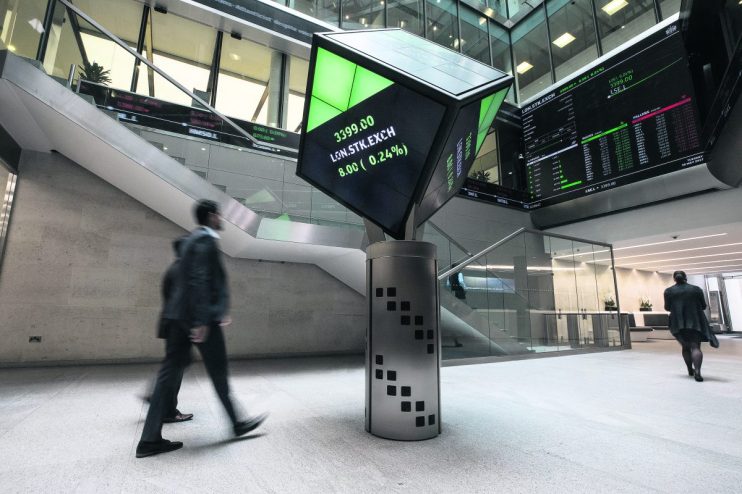
The FTSE 100 looks like it has finally turned the corner on a difficult 2023 as it continues to notch an impressive run which has seen the blue-chip index reach multiple new all-time highs.
So far this year the FTSE 100 has climbed just under eight per cent, which puts it roughly in line with peers in Frankfurt and Paris.
London’s premier index falls slightly behind the S&P 500 and the Nasdaq, which have gained 9.4 per cent and 10.6 per cent respectively in 2024, but is well ahead of the Dow Jones, which has only gained 3.1 per cent.
Its strong performance has been particularly striking over the past month or so, in which it has outperformed every major European and US index.
It has closed higher in 10 out of the past 13 days, setting a new record high of 8,363.06 earlier today.
What’s behind the rally? Sterling, rates and equities
The recent rally has been helped by hopes that the Bank of England will be in a position to start cutting interest rates this summer, unlike the Fed. US policymakers are still grappling with stubborn inflation and a hot labour market with traders not expecting any rate reductions until September at the earliest.
“The Bank of England’s increasing likelihood of rate cuts, in contrast to the Federal Reserve’s stance, has further bolstered investor confidence in UK equities,” Dan Squires, head of UK sales at Saxo said.
The differing timing of interest rate cuts across the Atlantic has put pressure on sterling, which has lost 1.85 per cent against the dollar this year.
The pound currently trades just under $1.25 having reached as high as $1.2850 in March.
“This has been a driving force for the index, with many of the constituents generating their revenues overseas, thereby benefiting from the weakened pound,” Shaan Raithatha, senior economist at Vanguard Europe said.
But perhaps the most important factor is the cheapness of the FTSE 100 compared to global peers, which has made it an attractive hunting ground for firms after a bargain.
There are 21 companies in a bid process with 12 of them in the FTSE 350, according to research from Peel Hunt.
“UK equities have looked compelling value relative to international peers for some time and now M&A is spreading to large caps,” Jo Rands, portfolio manager at the Martin Currie UK Equity Income Fund said.
Rands cited Anglo American and DS Smith, both of which have been takeover targets in recent weeks, as examples of FTSE mega-mergers.
Kathleen Brooks, head of research at XTB, also pointed to the impact of overseas takeovers. “The prospect of more M&A deals adding chunky premiums to under-priced UK stocks is another reason why the FTSE 100 is attractive to investors right now”.
The cheapness of UK stocks has been a common refrain over the past couple of years. The FTSE 100 currently sits on an average of 11 times the price-to-earnings ratio, compared to a long-run average of 12.8 times.
What takeovers there have been have also been relatively good value. The average premium for cash offers in 2024 is 38 per cent compared to a long term average of 55 per cent.
“Ultimately the best cure for low prices is low prices, because they boost demand (either takeovers or investor buying, in this case) and staunch supply at the same time,” Russ Mould, AJ Bell’s investment director said.

